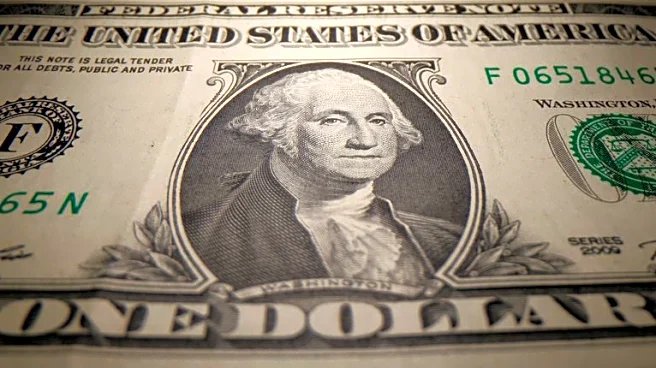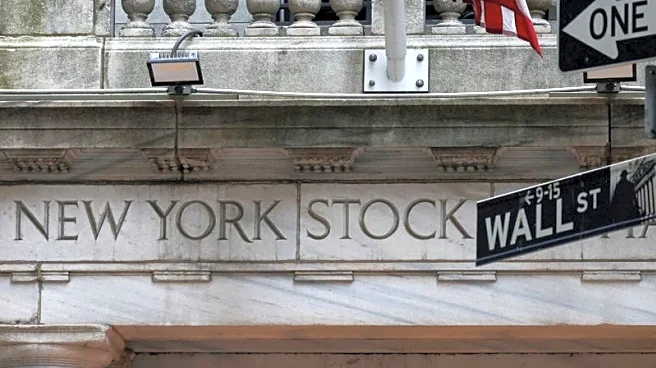What's Happening?
The U.S. dollar held just below multi-month highs, influenced by a recovery in risk appetite among investors. Sterling faced pressure ahead of a Bank of England meeting, where a dovish tone is anticipated.
The dollar remained relatively stable against the euro, while risk-sensitive currencies like the Australian and New Zealand dollars rebounded following a stock market recovery. The prolonged U.S. government shutdown has halted data publication, leaving investors and policymakers without a clear picture of the U.S. economy.
Why It's Important?
The dollar's movement reflects broader market sentiment and economic conditions, with implications for international trade and investment. The anticipation of a dovish tone from the Bank of England suggests potential future rate cuts, which could impact currency valuations and economic strategies in the UK. The recovery in risk-sensitive currencies indicates shifting investor confidence, influenced by stock market dynamics and global economic indicators. The lack of official U.S. economic data due to the government shutdown adds uncertainty to market forecasts and decision-making.
What's Next?
Investors are likely to remain cautious, awaiting clearer economic data and policy signals. The Bank of England's meeting outcomes will be closely watched for indications of future monetary policy adjustments. The ongoing U.S. government shutdown may continue to affect data availability and market stability, prompting stakeholders to rely on private sources for economic insights.
Beyond the Headlines
The situation highlights the interconnectedness of global financial markets and the impact of geopolitical events on economic stability. The reliance on private data sources during the U.S. government shutdown underscores the importance of transparency and reliability in economic reporting.












